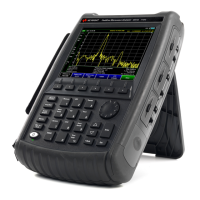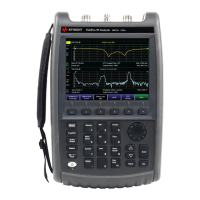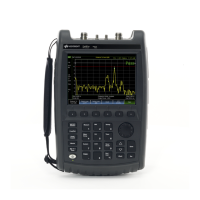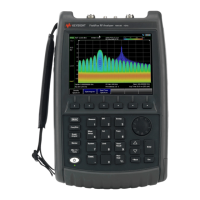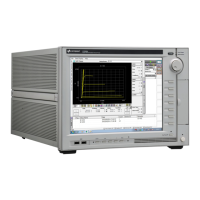54 Keysight N9927-90001 User’s Guide
CAT (Cable and Antenna Test) Mode
CAT Mode Settings
toggle this setting between ON and OFF. If the measurement result decreases
while ON, then there is an interfering signal in the area. Continue to make
measurements with Interference Rejection ON. However, this will slow the
measurement speed.
Once enabled, up to SIX sweeps may be required before the interfering signal
is neutralized.
This setting can be changed at any time without affecting calibration accuracy.
How to set Interference Rejection
—Press Meas Setup 4.
—Then Interference Rejection [current setting]
.
— Then choose from the following:
— Off
No interference rejection and fastest possible sweep speed
— Minimum
The lowest level of Interference rejection.
— Medium
The medium level of Interference rejection.
— Maximum
The highest level of Interference rejection.
Coupled Frequency
This setting, especially useful for a Return Loss & DTF measurement, allows
both measurements to have different frequency ranges.
How to set Coupled Frequency
With a Return Loss & DTF measurement present:
—Press Meas Setup 4
.
— Select the DTF measurement (Tr2) using the arrows.
— Then choose from the following:
— Coupled Freq ON
- Both the Return Loss and DTF traces have the same
frequency range settings.
— Coupled Freq OFF
(default setting) - Both traces are allowed to have
individual frequency range settings. When set to OFF:
— The Return Loss measurement frequency settings are made in the
usual manner. Learn how at “Frequency Range” on page 49. When a
new Start or Stop frequency is selected, Coupled Frequency is
automatically set to OFF.
— The DTF measurement is made using the frequencies as determined
by the DTF Frequency Mode setting. Learn more in “DTF
Measurement Settings” on page 62.

